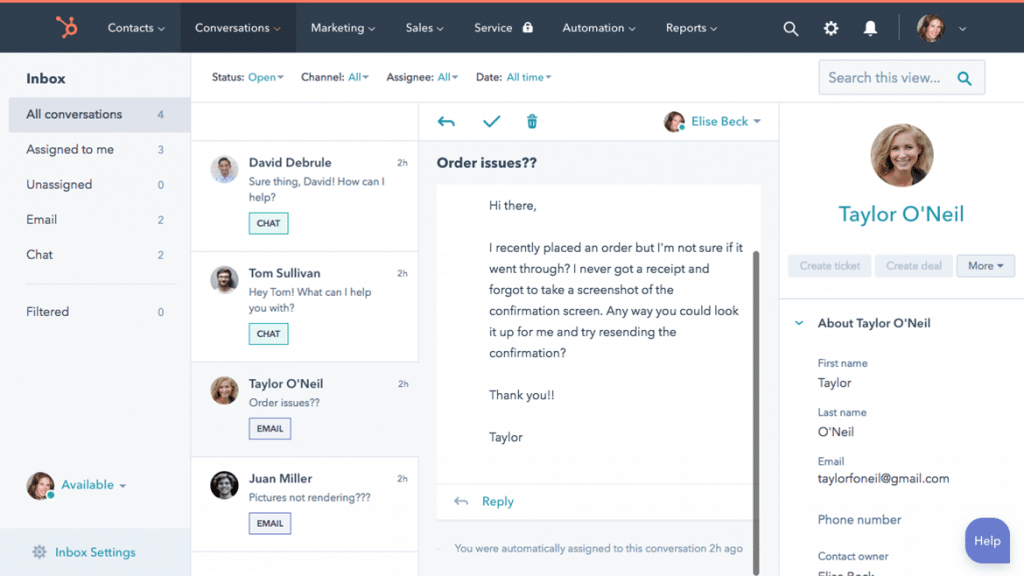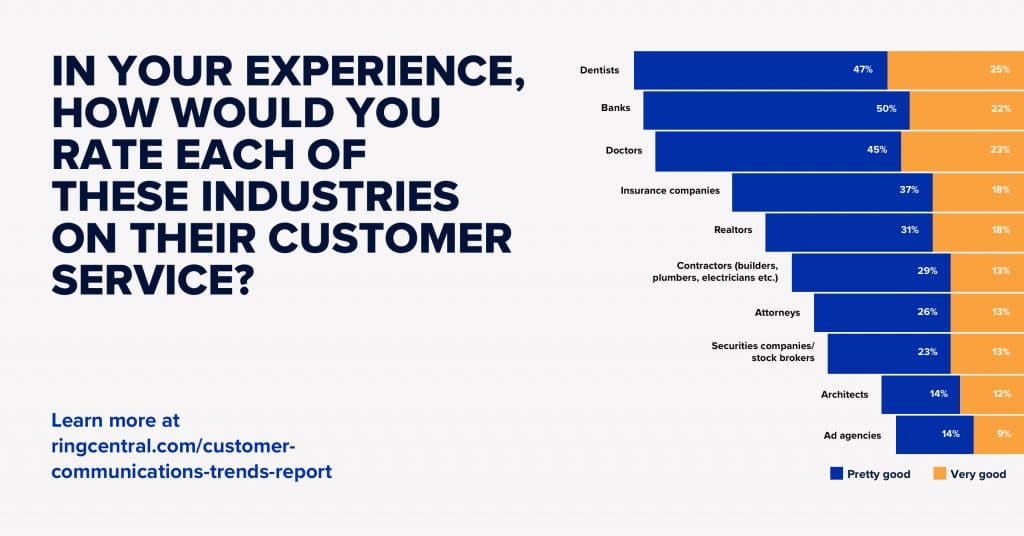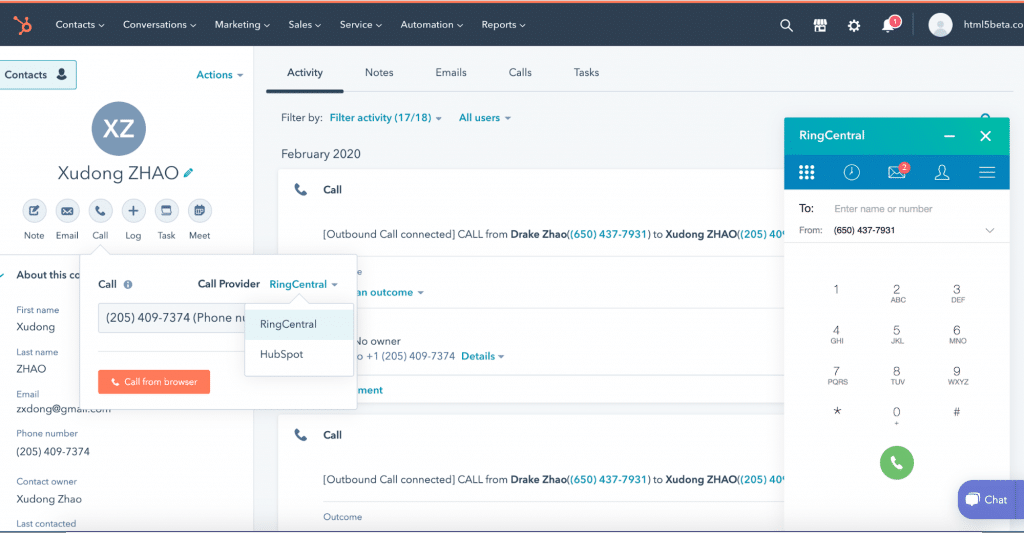If you’re running a small business, you’re probably aware of the inherent give-and-take relationship between you and your customers. You deliver a service, they pay for it. It’s “just business” after all, right?
But have you ever been on the receiving end of someone who over-tips?
Maybe it’s just a couple bucks, or maybe it’s a few hundred… whatever the amount, clearly, you’ve done something right. Moments like these seem to defy that black-and-white relationship between a business and its customers.
Here’s the thing—everyone, including you, has a radar. We all walk around with the innate ability to detect when businesses go beyond the call of duty. And when they do, we tend to reward them. Over-tipping is just one form of this reward. Other forms can be more lasting, such as a rave five-star review on Google, plus a few personal referrals that bring in new business.
When a customer is genuinely delighted by a business’s offering, you can be sure they’ll be happy to go above and beyond their role as just a paying customer.
This begs the question: how do I get on my customers’ radars?
In this post, we’ll cover:
- What “good customer service” is
- What good customer service looks like
- The benefits of providing good customer service
- 5 ways to provide good customer service
What exactly is “good customer service?”
There are three sides to this answer: what you offer, how much you offer it for, and how you offer it.
While the first two are governed by a business plan and economic trends, the third is something that you can continuously improve to get on your customers’ radars.
For instance, say you run a business that sells solar panels. You offer three tiers of panels that are set at $200–500 based on industry rates. These factors are unlikely to change in the short run, but one way you can differentiate yourself is in how you offer it, which lies in the customer service you provide.
Good customer service is about providing the best possible experience in the moments leading up to, during, and following a customer’s interaction with your business. There’s the obvious stuff like being available for their questions. But it’s also subtle things like knowing the whole history between the customer and your business within minutes or having every interaction with them feel consistently upbeat.
And for whatever reason, some industries are absolutely killing it when it comes to customer service (while others are doing abysmally):
In fact, customer service makes such a big difference that following a poor experience, 89% of consumers switched to doing business with a competitor1. Just think about it. Your business is likely just one of many hits in a simple online search when someone is considering their options. If they had to choose between two businesses with good products, but one has much better customer service than the other, which do you think they’d choose?
What does good customer service look like?
Customer expectations are going to vary across businesses and industries.
For example, in retail, having a digital presence is the new norm. A shopper looking to buy a dress likely expects their favorite store to stock it online.
In the auto industry, speed is of the essence. A person looking to get their car fixed expects to be able to pick it up the next day.
Despite all these variances, that’s not to say there aren’t universal principles that still cut across all of them. Let’s take a look at what some of these are.
Examples of good customer service
Here are three examples of what good customer service looks like. Can you guess what universal principles they share that can be applied to any business looking to improve their customer service?
1. T-We Tea
For a frequently returning customer, this tea shop wrote a personalized handwritten note to accompany a purchase order that read “OMG, Hi Francesca! So lovely to see your name come up! We miss you dearly up here but know you are always doing epic things!”
Seeing this message, Francesca decided that T-We Tea would always be one of her go-to places for loose leaf tea:

Takeaway: A little effort to personalize your customer experience can go a long way. Don’t forget the human touch.
2. Kershaw Knives
When a customer broke the pocket clip of his new knife from Kershaw Knives, the business immediately sent him a new clip free of charge, making sure it reached him within a week.
Kershaw’s willingness to pocket the minor product and shipping costs made the business stand out so much to him that he later went on online to give them an outstanding review. Worth the relatively small cost? We think so, especially if it’s a customer with a large social following:

Takeaway: Relatively small costs can have outsized rewards. Invest in your customer relationships.
3. Flores Landscaping
A customer had contacted a landscaping business a while back for some ideas for her fence design. Though it took her three years before she got back to them with the decision to continue, the business was happy to work on her timeline and provided a friendly and positive experience nonetheless to win her over—and earn this review:

Takeaway: Play the long game. Sometimes, customers don’t become customers right away.
Universal principles
In all three examples, the service staff saw their customers as more than just people with money to spend. They saw them as people who’d have hopefully long-term relationships with their businesses. People who are worth investing time and effort into. Doing whatever they could to make life easier for them, they provided a type of personal support that’s typical of friends but unexpected of businesses. That’s what stood out to each customer.
Another commonality in these examples is that employees took a proactive approach to solving their customers’ problems. Whether it’s sensing their hesitation and providing confidence in their service or sending them replacements beyond what was paid for, this type of response garners a positive response because it shows that they care about their customer’s relationship with them for the long haul.
Not every customer service action needs grand gestures to leave a lasting impression. Great customer service can mean being attentive and finding subtle ways to help.
Of course, providing stellar service requires effort, time, and sometimes might even come at a short-term cost.
But the long-term benefits of good customer service are well worth the extra thought. Before we get into ways you can boost your own customer service, let’s take a look at what some of these benefits are.
What are the benefits of good customer service?
It’s no secret that stellar customer service makes for positive long-term success. If you’re wondering how exactly it translates, here are three reasons:
1. It helps you pick up on trends
In one-on-one moments with your customers, as much as you might be doing the selling, don’t forget that they’re also doing the talking. Your job here is to listen. Chances are you’ll pick up on key customer feedback and insights to guide your future business decisions.
For instance, while helping a customer choose between which solar panel best meets their needs, they might mention specific product features they’re looking for based on what competitors are producing. Or they might mention why they’re particularly interested in buying solar panels (because everyone in their cottage neighborhood is getting on board).
With this sort of intel, you might get some ideas on how to target cottage owners in your future marketing or how to update your product to serve a growing consumer need.
2. Earn positive reviews
Trust is a huge asset in any business, and as it turns out, trust also applies to strangers (even ones online we’ve never met before). Seventy-three percent of consumers say that positive customer reviews make them trust a business more than one without reviews2.
In psychology, the power of reciprocity means that we generally feel compelled to return a kind gesture with one of our own. When we deliver great customer service, chances are the people who were positively affected by it will return the gesture, likely in the easiest way they know how—by leaving you a raving review, whether online or by telling others they know. Who doesn’t love free marketing?
3. Keep customers, save money
With new customers coming in, don’t forget that keeping existing customers is just as valuable (especially for your bottom line).
Good customer service is a key driver of customer loyalty. Loyalty means they’ll keep coming back while you continue to gain positive word-of-mouth. Plus, loyal customers are worth up to 10 times as much as their first purchase3.
Keep that in mind, especially when you’re closing out a sale, because customer service doesn’t just end when the sale is done. Give them a reason to come back.
5 ways to provide good customer service
As customers, good service is easy to recognize. As business owners, the benefits are clear yet the ways to get there can seem hard to reach.
Here are five ways to deliver amazing customer service that you can start doing today:
1. Put collaboration at the center of service
Customer service is a team sport that’s not played by just the single individual interacting with the customer. Success depends on getting knowledge quickly and effectively to the rep responding to the customer—especially when they’re not the specialist. Having the right virtual tools in place can facilitate this collaboration.
For instance, if an on-site technician needs help with an installation, the product expert can quickly send over troubleshooting files to help resolve the situation.
How to achieve this: With RingCentral’s Collaborative Contact Center, you can connect your teams together through messaging to quickly find resolutions to customer challenges. Using this tool, reps can connect with experts who can share files instantly so that the rep can stay focussed on working with the customer.
2. Let your customers self-serve
Empower your customers to find answers all on their own by providing them with the right tools to do so. While it’s recommended to still make the option available to chat with a service rep if needed, sometimes customers just want to be able to solve their own problems quickly.
There are lots of forms this can take, such as providing a robust online help center, allowing customers to log in to check delivery statuses, change reservations, book online, and more.
How to achieve this: With Booker’s scheduling tool, you can add a booking option to your website where customers can view available time slots, select services, make appointments, and get notified of upcoming events with you.
3. Let customers choose how to reach you
With a whole ecosystem of ways in which customers can connect with businesses (through voice, chat, text, email or video), it makes for an ever growing expectation on businesses.
One of these expectations is to make all these methods available to them. Another expectation is to make the experience feel seamless (as in the customer doesn’t have to repeat information if they start an online chat that gets redirected to a phone call).
Remove the friction and allow customers to connect with you as easy as texting a friend.
How to achieve this: Use a unified platform that brings together all the different communication channels that your customers can use to get through to you. This way, instead of having to have your Twitter chats open in one window, your Facebook messages open in another, and your email inbox open in yet another, your team can see everything in one place. For example, RingCentral is one of these tools that connects your social media accounts to make it easier for you to monitor conversations and deliver real-time support:
4. Personalize the experience
Every person who interacts with your business has a different set of needs. To exceed customer expectations, you have to understand what those needs are to avoid applying a one-size-fits-all service approach.
By knowing the unique history that each customer has with your business, you can make interactions more personal—and efficient.
Customer relationship management (CRM) tools can help you keep records of every interaction with a customer, whether it’s through phone, email, messaging, or text. Your team then has shared access to this centralized information so that everyone can have the same personalized relationship with each customer.
How to achieve this: With Hubspot’s CRM tool, you can get started today to build one directory of all your customers and their profiles to help you deliver more tailored customer services:

Bonus tip: Integrate HubSpot with RingCentral to dial your customers and receive calls, straight from your computer screen:
5. Use analytics to read customers’ minds
Too often, the function of customer service seems to be just to resolve an issue that’s already happened. By tapping into the power of predictive customer experience analytics, you can actually get ahead of the curve and stay proactive to identify customer problems before they happen.
If you want to catch customers before they even think of leaving, this is the key.
Did you know that FedEx uses predictive analytics to see which of its customers will leave for a competitor with 60–90% accuracy4?
How to achieve this: With Sigma, you can turn customer data into insights that help you make better decisions on how to proactively respond to shifting customer needs. This is a more advanced solution that requires taps into data modeling, but once you get the hang of it, it’s a powerful tool:

You can enhance your customer service starting today
Several of the tools we mentioned in this article offer free trials for first time users so you can give it a try at no risk.
Beyond using technology to drive greater services though, consider how your business culture plays a role here as well.
Ask yourself:
- Does your business have a customer service vision that everyone is on the same page on?
- Does everyone in your business define outstanding customer service in the same way?
- Do your employees feel empowered to make the right call when it comes to resolving customer situations?
- Do your employees have the ability to make autonomous decisions during critical times without needing supervision?
Delivering amazing customer service is a practice that takes commitment, not just by one or two all-stars, but by everyone on the team.
So be sure everyone’s on board and on the same path to creating positive experiences for customers at all times.
1 blogs.gartner.com/jake-sorofman/gartner-surveys-confirm-customer-experience-new-battlefield
2 allbusiness.com/strangers-trust-power-online-customer-reviews-101556-1.html
3 experian.com/blogs/insights/2018/06/customer-loyalty-using-data-to-keep-the-love-alive
Originally published Mar 15, 2020, updated Jul 24, 2024








